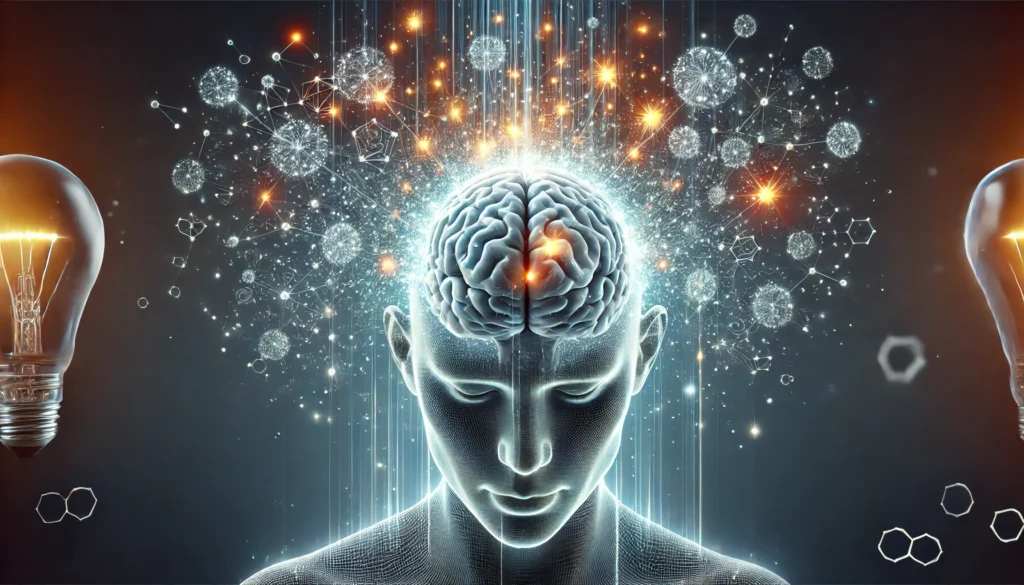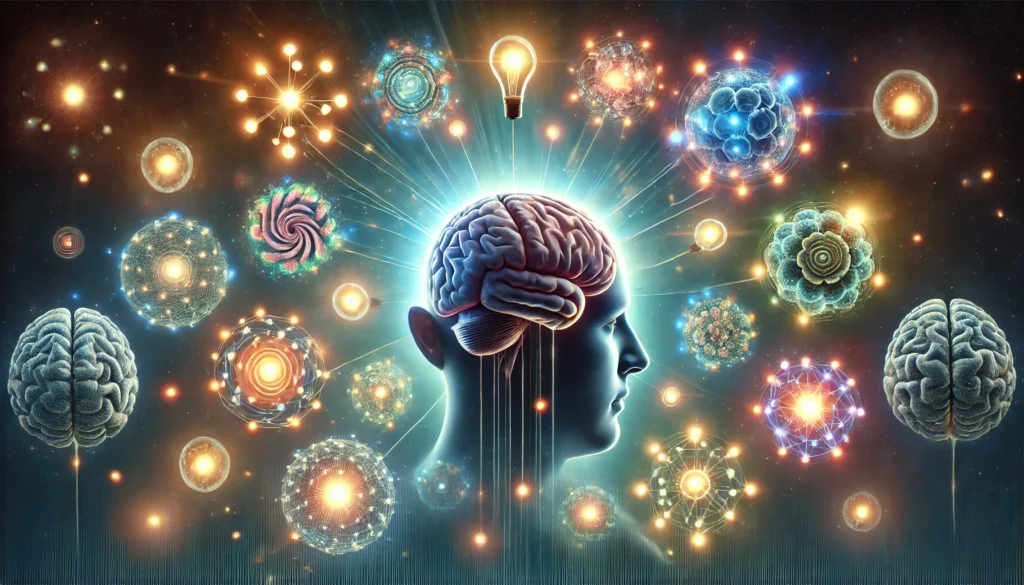This article explores top memorization techniques that can help you learn faster and retain information longer. We’ll delve into methods that range from ancient techniques to modern scientific insights, providing you with a comprehensive toolkit for better learning. By understanding these methods, you can tailor your learning strategy to suit your personal needs and goals.
You may also like: Effective Memory Techniques for Better Studying
The Science of Memorization
Before we dive into specific techniques, it’s crucial to understand the science behind memorization. Our brains store information in the form of neural connections. The stronger these connections, the better we remember. Repetition, emotional engagement, and multisensory input can all enhance memory retention.
Neural Pathways and Memory Formation
The formation of memory involves the creation of neural pathways. Whenever we learn something new, neurons in the brain communicate through synapses, forming connections. These pathways become more robust with repeated use, making recall easier over time. Understanding this process highlights the importance of practice and repetition in learning.
The Role of Emotion in Memory
Emotion plays a significant role in memory retention. Events or information that evoke strong emotions are more likely to be remembered. This is because emotional experiences trigger the release of neurotransmitters, which strengthen neural connections. Incorporating emotional elements into learning can thus enhance memorization.
Multisensory Learning
Engaging multiple senses can improve memory retention. The brain processes multisensory information more thoroughly, creating a richer memory trace. For example, combining visual, auditory, and kinesthetic elements can enhance understanding and recall. This is why teaching strategies that involve multiple senses are often more effective.
How to Memorize Something Fast in 5 Minutes
The idea of memorizing something quickly might seem daunting, but with the right approach, it’s entirely feasible. Here are some techniques to help you memorize information in a short timeframe:
Chunking for Rapid Recall
Chunking involves breaking down information into smaller, manageable units. Our brains naturally remember lists and sequences better when information is grouped. For instance, phone numbers are often chunked into sections to aid memorization. This technique exploits the brain’s preference for organized data.
Visualization Techniques
Visualization involves creating vivid mental images to represent information. The brain is adept at remembering images, often more so than text. By associating concepts with striking visuals, you can significantly enhance recall. This method is especially useful for abstract ideas, which can be hard to remember otherwise.
Using Mnemonic Devices
Mnemonic devices are tools that facilitate memory through association. Techniques such as acronyms, rhymes, or linking new information with familiar concepts can serve as mental shortcuts. These devices simplify retrieval by creating a structured memory framework.
How to Learn Text Fast
When it comes to learning text quickly, comprehension is key. Understanding the material not only aids memorization but also helps you apply the knowledge effectively. Here are some strategies to expedite your learning process:
Active Reading Strategies
Active reading involves engaging with the text through highlighting, note-taking, and questioning. These activities force the brain to process information deeply, reinforcing memory. By actively engaging with the material, you enhance both comprehension and retention.
The Power of Summarization
Summarization requires distilling information into your own words. This process necessitates deep understanding and active processing, which strengthens memory encoding. Summarizing also aids in identifying key concepts and relationships within the material.

Teaching as a Learning Tool
Teaching the material to someone else is a powerful way to reinforce learning. Explaining concepts out loud requires organizing thoughts and clarifying understanding. This method not only solidifies your knowledge but also uncovers any gaps in comprehension.
Good Ways to Remember Tangible Information
Tangible information, such as names, dates, or facts, can be challenging to remember. Here are some effective methods to enhance your recall:
The Memory Palace Technique
Also known as the Method of Loci, the Memory Palace Technique involves visualizing a familiar place and associating specific locations with the information you want to remember. This method leverages spatial memory, which is highly effective for recalling concrete data. By mentally walking through the palace, you can retrieve information in a structured manner.
The Power of Association
Linking new information to existing knowledge through association is a powerful mnemonic strategy. By creating connections between disparate pieces of information, you can enhance recall. This technique works by weaving new data into a broader web of knowledge.
Spaced Repetition
Spaced repetition is a technique that involves reviewing information at increasing intervals. This approach takes advantage of the brain’s natural forgetting curve, ensuring that information is revisited just as it’s about to be forgotten, thereby strengthening memory retention. This method is particularly effective for long-term memorization.
How to Memorize Something Overnight
While instant memorization isn’t always possible, certain strategies can help you absorb information more effectively overnight:
The Bedtime Review Technique
Reviewing information before bed can significantly enhance memory consolidation. Sleep plays a critical role in processing and storing information, making it an optimal time to reinforce learning. This technique takes advantage of the brain’s natural overnight processing capabilities.
Prioritizing Quality Sleep
Quality sleep is essential for memory formation and cognitive function. During sleep, the brain consolidates and organizes information, enhancing recall and understanding. Ensuring adequate rest—typically 7-9 hours—optimizes the brain’s ability to process new information.

The Role of Dreams in Learning
Dreams can play a role in learning and memory consolidation. During REM sleep, the brain processes emotional and complex information. Engaging with material in a way that stimulates dreaming can enhance the integration of new knowledge.
Modern Techniques and Tools
In addition to traditional methods, modern technology offers innovative tools to support memorization:
Digital Flashcards and Apps
Apps like Anki and Quizlet utilize spaced repetition to help users memorize information more efficiently. These platforms allow you to create custom flashcards and track your progress over time. Digital tools offer flexibility and accessibility, making them ideal for on-the-go learning.
Brain Training Applications
Apps such as Lumosity and Elevate offer games and exercises designed to improve cognitive functions, including memory. These tools enhance brain plasticity, boosting memory capacity and overall cognitive health. Regular use can lead to measurable improvements in mental agility.
The Future of Digital Learning
The rise of digital learning continues to transform educational landscapes. Future developments in AI and machine learning promise even more personalized and effective memorization tools. These advancements will likely make learning more interactive and adaptive to individual needs.
Historical Context and Future Implications
Memorization techniques have evolved significantly over the centuries. Ancient scholars relied on methods like oral traditions and mnemonic devices to retain vast amounts of information. Today, we have the advantage of scientific insights and technological advancements that make memorization more accessible and effective.
Ancient Memorization Methods
In ancient times, memorization was a revered skill, essential for preserving knowledge in the absence of written texts. Techniques like storytelling and rhyming were commonly used to pass down information through generations. These methods laid the groundwork for modern mnemonic strategies.
The Evolution of Memory Techniques
Over time, memorization techniques have adapted to societal changes. The invention of the printing press, for example, shifted reliance from oral to textual memory. Today, digital tools and neuroscientific research continue to transform how we approach memorization.
Future Directions in Memory Enhancement
Looking to the future, emerging research in neuroscience and artificial intelligence promises to unlock new possibilities for memory enhancement. From brain-computer interfaces to nootropic supplements, the quest for improved memorization continues to evolve. These innovations could redefine learning and cognitive enhancement.

Conclusion
Memorization is a skill that can be honed and refined with practice. By incorporating these techniques into your learning routine, you can enhance your ability to remember information quickly and effectively. Whether you’re memorizing for personal growth, academic success, or professional development, these strategies offer a pathway to a sharper, more agile mind.
Remember, the key to successful memorization lies in understanding the science behind it and experimenting with different techniques to find what works best for you. So, start practicing today and unlock your brain’s full potential for learning and memory. Embrace the journey of learning, and let these techniques guide you towards greater knowledge retention and application.
Further Reading:
36 Best Memory Techniques for Studying
Best Study Methods for Memorization: 12 Science-Backed Techniques That Stick!
15 Memory Techniques For Studying & Remembering Key Concepts
Important Note: The information contained in this article is for general informational purposes only, and should not be construed as health or medical advice, nor is it intended to diagnose, prevent, treat, or cure any disease or health condition. Before embarking on any diet, fitness regimen, or program of nutritional supplementation, it is advisable to consult your healthcare professional in order to determine its safety and probable efficacy in terms of your individual state of health.
Regarding Nutritional Supplements Or Other Non-Prescription Health Products: If any nutritional supplements or other non-prescription health products are mentioned in the foregoing article, any claims or statements made about them have not been evaluated by the U.S. Food and Drug Administration, and such nutritional supplements or other health products are not intended to diagnose, treat, cure, or prevent any disease.


